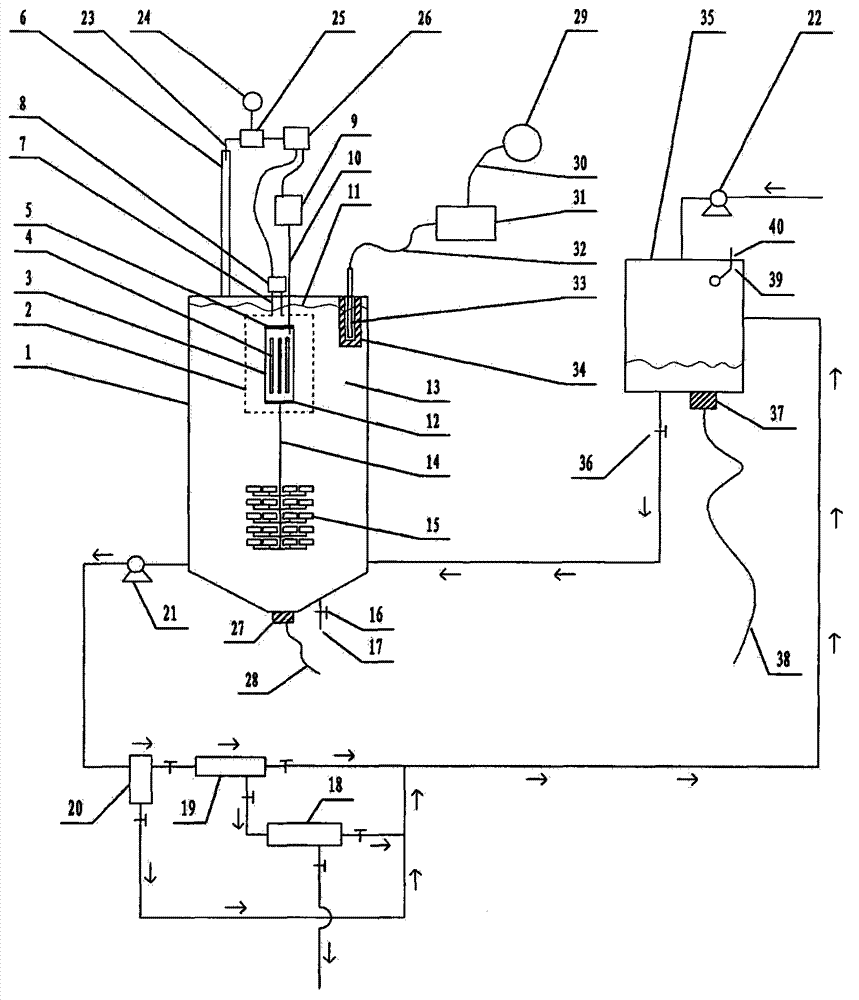High-capacity photocatalytic wastewater degradation device for precisely recycling titanium dioxide catalyst particles
A wastewater degradation device and titanium dioxide technology, which are applied in chemical instruments and methods, water/sewage multi-stage treatment, water/sludge/sewage treatment, etc., can solve problems such as troublesome, unreliable, and excessive waste water filling.
- Summary
- Abstract
- Description
- Claims
- Application Information
AI Technical Summary
Problems solved by technology
Method used
Image
Examples
Embodiment Construction
[0122] exist figure 1In the example of the present case shown, the structure of the device in this example includes a reactor 1, which is a hollow container. Prismatic, spherical or ellipsoidal, many microporous aeration heads 15 are installed in the lower area of the inner chamber of the reactor 1, and the mark 15 only indicates the individual microporous aeration heads, and 15 only indicates the micropores The individual form of the aeration head, and, quartz tube 3, this quartz tube 3 is set up in the inner cavity position of described reactor, and the two ends of this quartz tube 3 are equipped with sealing cap 5,12, are respectively positioned at quartz tube 3 Both ends are provided with a ventilation interface, and the electrodeless ultraviolet lamp 4, the electrodeless ultraviolet lamp 4 is rod-shaped, ring-shaped, spherical, starfish-shaped or sea urchin-shaped, and the quantity of the electrodeless ultraviolet lamp 4 At least one, the number of at least one electro...
PUM
| Property | Measurement | Unit |
|---|---|---|
| pore size | aaaaa | aaaaa |
| pore size | aaaaa | aaaaa |
| pore size | aaaaa | aaaaa |
Abstract
Description
Claims
Application Information
 Login to View More
Login to View More - R&D
- Intellectual Property
- Life Sciences
- Materials
- Tech Scout
- Unparalleled Data Quality
- Higher Quality Content
- 60% Fewer Hallucinations
Browse by: Latest US Patents, China's latest patents, Technical Efficacy Thesaurus, Application Domain, Technology Topic, Popular Technical Reports.
© 2025 PatSnap. All rights reserved.Legal|Privacy policy|Modern Slavery Act Transparency Statement|Sitemap|About US| Contact US: help@patsnap.com

